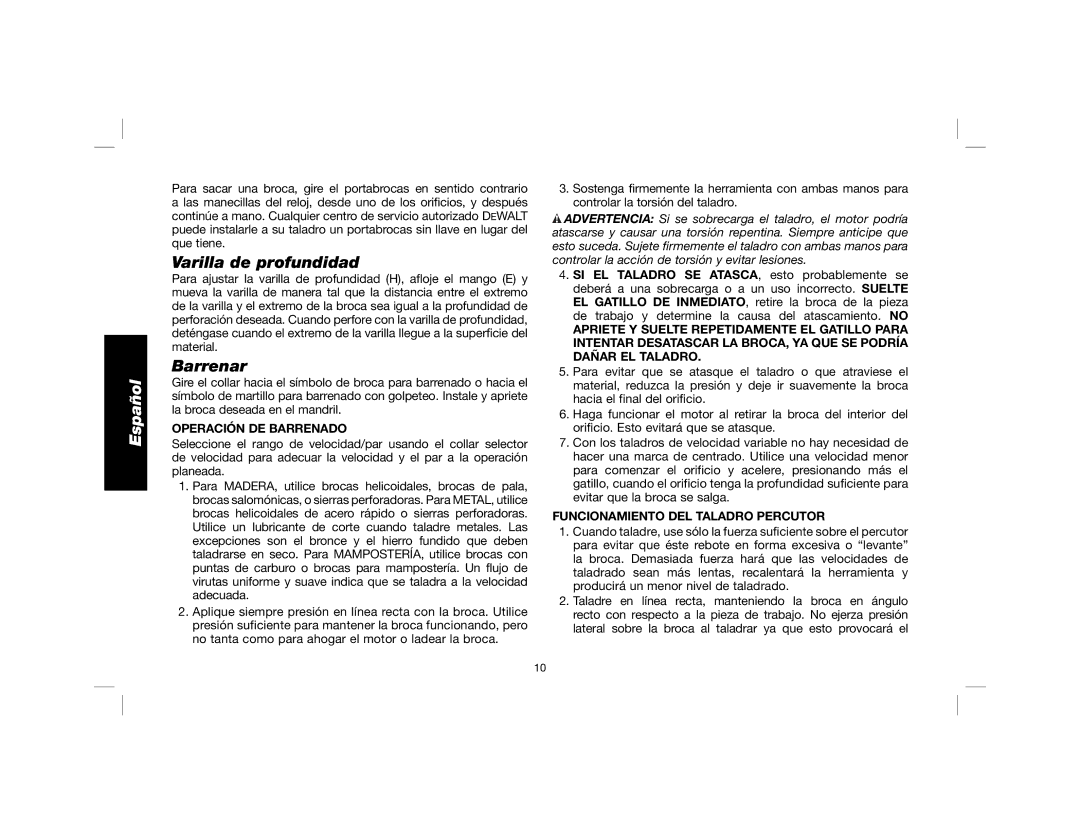DWD520, DWD520K specifications
The DeWalt DWD520K is a powerful and versatile tool designed for both professional tradespeople and dedicated DIY enthusiasts. Engineered for heavy-duty applications, this corded drill delivers a host of innovative features that make it a high-performance option for a variety of tasks.One of the standout features of the DWD520K is its 8.0 Amp, 0–1,200 RPM motor. This robust motor provides the necessary power to tackle demanding drilling applications, ensuring efficient performance whether you are drilling into wood, metal, or masonry. The variable speed control allows users to customize the speed according to the material being worked on, providing maximum torque when needed.
An important technology integrated into the DWD520K is its Dual Range Clutch. This feature allows users to switch between high and low-speed ranges, enabling precise control in different applications. In high-speed mode, the drill reaches a maximum of 1,200 RPM, perfect for drilling small holes in softer materials. In low-speed mode, a greater torque output is delivered, which is essential for tougher jobs that require higher force, such as drilling into metal.
Another significant characteristic of the DeWalt DWD520K is its durable construction. Built with a high-quality all-metal keyless chuck, this drill ensures a secure grip on bits and quick changes without the hassle of traditional chuck keys. This promotes increased efficiency and reduces downtime during projects.
The DWD520K also features an ergonomic design, with a soft-grip handle that enhances user comfort and control during prolonged use. Its balanced weight distribution minimizes user fatigue, making it suitable for extended job sessions, whether in tight spaces or overhead.
In addition, the drill comes equipped with an integrated side handle that offers additional support and control, allowing for greater precision while drilling. The 360-degree design ensures versatility, accommodating various angles and positions.
In summary, the DeWalt DWD520K is a professional-grade drill that combines powerful performance, innovative technology, and user-friendly features. Its durable construction and ergonomic design make it a reliable choice for any drilling task, whether in a professional setting or a home workshop. Whether you are an experienced contractor or a passionate DIYer, the DWD520K provides the versatility and efficiency needed to achieve outstanding results on every job.

